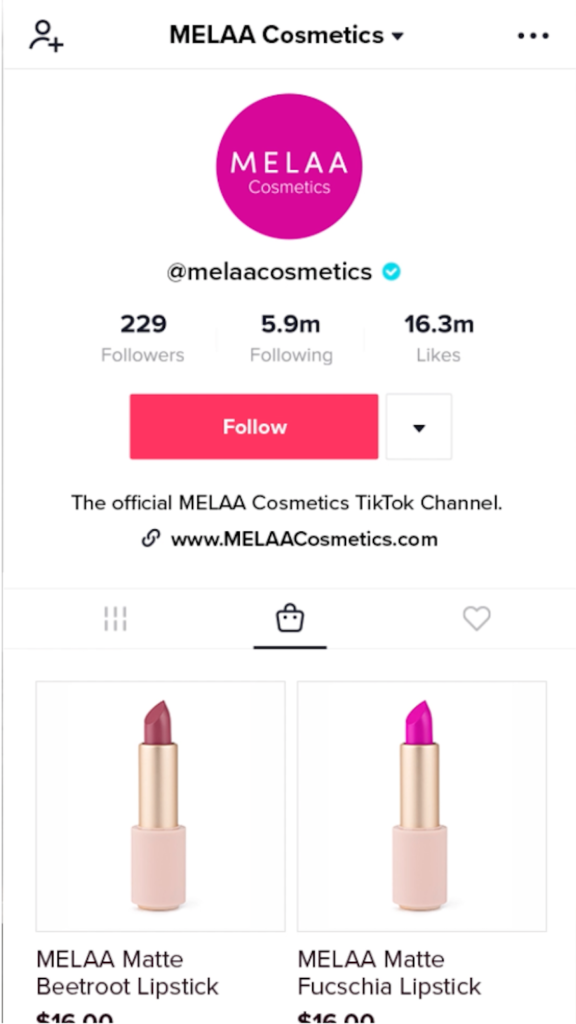This past Tuesday, TikTok announced in TikTok news and at TikTok World the official full-scale launch of TikTok Shopping.
TikTok Shopping was in pilot mode until now, with testing in the US, UK and Canada. During testing, only select ecommerce brands with a TikTok for Business account and Shopify website could take advantage of the shopping features. The most significant feature by far was a shopping tab on their profile where they could sync Shopify products to create a mini storefront.

Now, with TikTok online shopping available to all, TikTok has officially joined the ranks of social commerce platforms. And it has done so with new features and partners to boot.
This opportunity is big news to ecommerce brands. Compared to competing platforms, TikTok users are 1.7 times more likely to purchase products discovered through the app.
Expanding Accessibility With New Integration Partners
The biggest flaw we saw when evaluating the pilot in August was limited accessibility. Still, we knew that to roll out the feature on a large scale, TikTok would grow its third-party partnerships. Now it has done just that.
In addition to Shopify, TikTok has partnered with Square, Ecwid and PrestaShop. Other integrations coming soon include Wix, SHOPLINE, OpenCart and BASE.
Selling on TikTok Without a Third-Party
To help more businesses sell products on TikTok, the platform is also offering its own integration and full-service shopping solution that doesn’t require a third party. With it, TikTok offers to help manage everything, from uploading products to point-of-purchase, shipping and fulfillment.
TikTok also announced the release of a TikTok Shopping API later this year. The API will allow businesses to integrate their product catalogs directly into TikTok and include those products in organic content.
New TikTok Shopping Features
With TikTok shopping comes new features intended to help ecommerce stores increase their chances of success. While creating a TikTok shop is a great place to start, you will also want to market your products with the following.
TikTok shopping links: Add product links to your organic TikTok videos that, when tapped, direct viewers to the product page for more details.

Live shopping: Host TikTok live shopping sessions to connect with buyers and show off products. Provide product links during the session to direct viewers to product pages.
Collection ads: Collection ads are one of two new TikTok shopping ads. These are worth taking advantage of as 7 out of 10 users actually enjoy TikTok ads. Collection ads allow you to add swipeable product cards to your in-feed ads. Use each card to show off a different product, and when tapped, it will show viewers a gallery page for browsing and purchasing products. These are great for increasing site traffic and promoting product sales and launches.

Dynamic showcase ads: Another new type of TikTok ad is the dynamic showcase ad. With these, you can promote a large number of products. Each product ad has personalized messaging and targeting based on viewer interests (as determined by their behaviors on the platform).
Lead generation ads: Lead generation ads were introduced in August but are a valuable tool nonetheless. They help you collect the data of consumers interested in your products through an online form. You can use the data you collect to generate leads, segment audiences and produce targeted messaging. TikTok also makes it possible to share lead information with your ecommerce CRM.
Other Features Announced at TikTok World
TikTok announced several other features at TikTok World apart from shopping that impact businesses selling on TikTok, including collaboration and success measuring tools. If you’re wondering how to sell on TikTok, take advantage of the following.
The TikTok Creator Marketplace: Influencer marketing is one path to success on the platform. A new Creator Marketplace makes it easier for you to discover a variety of platform creators that align with your brand image.
Open Application Campaigns: Brands can now have creators come to them with open application campaigns. You only need to post a campaign brief on the TikTok Creator Marketplace. From there, creators will view it, and interested creators will apply.
Customized Instant Pages: You can now create fast-loading landing pages to teach users more about your brand or show more of your content.
The TikTok Inventory Filter: A common complaint of TikTok advertising used to be that brands had no control over the content that appeared before and after their ads. This filter gives advertisers more control over where their ads run.
Is TikTok Shopping Entirely In-App?
Whether you use a third-party partner or work with TikTok directly, you have some control over how much of the shopping process is conducted in-app. As a retailer, you can let consumers checkout within TikTok or direct them to your website. With the latter, you can increase website traffic and collect buyer data.
Ecommerce Brands Will Benefit
We’re known to be skeptical of new ecommerce platforms. As more players enter, you need to be strategic in where you do—and don’t—invest your marketing efforts.
But when it comes down to it, TikTok is perfect for social commerce.
Video plays an increasingly vital role in selling online, and TikTok moved into the ecommerce space largely because users asked for it. The trend #TikTokMadeMeBuyIt has 5.4 billion views and counting, encouraging shopping on TikTok among users.

To learn more about the power behind TikTok commerce, check out the blog we wrote on it when the platform first started piloting its shopping features.


